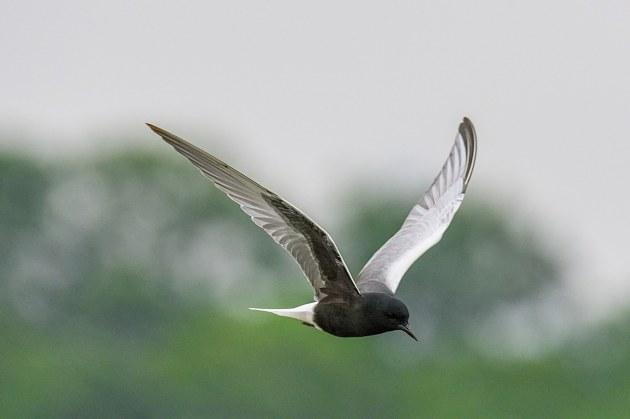Chlidonias niger
IUCN
LCBasic Information
Scientific classification
- name:Chlidonias niger
- Scientific Name:Chlidonias niger
- Outline:Wading birds
- Family:Charadriformes Gullidae F.Gulliform
Vital signs
- length:24-27cm
- Weight:53-68.66g
- lifetime:20-30years
Feature
The mouth is long and pointed black, and the feet are reddish-brown
Distribution and Habitat
It breeds in freshwater bodies from North America, Europe to the Caspian Sea and central Russia. Winter migrates south to Central America, South Africa and West Africa, with drifters reaching as far as Chile, Japan and Australia.
Extremely rare in China. It breeds in the Tianshan Mountains of western Xinjiang and may also be found in the Hulun Chi region of eastern Inner Mongolia. Stray birds have been recorded in Tianjin, Beijing, Hebei (Beidaihe) and Yancheng, Jiangsu.
It lives in lakes, rivers and swamps in plains, mountains, forests and deserts, especially in shallow inland lakes with aquatic plants, and sometimes in coastal and coastal swamps.
Appearance
The mouth is long, pointed and black. Reddish-brown feet. The head, neck and underbody are black, and the back and tail are gray. The undertail coverts are white and the tail is forked. The underwing coverts are also white. The forehead and lower body of the winter feather are white, the back head and pillow are black, and the ear area has a black spot, which is connected with the black head and extends down to the eye. Thick black spots on both sides of the chest. The upper body and wings are gray, and the lower wings are white.
Adult bird Xia Yu: head black, back and shoulders SLATE gray, waist and tail gray. The upper wing is SLATE gray, the primary and secondary flight feathers are grayish black toward the end, and the base of the outer primary feathers is white. Black underbody, white perianal and undertail coverts. Adult winter feathers: black on top of head and pillow, connected with black from ear feathers to eye first. The upper body is light grayish-brown, the wings are li
Details
The Black Tern has two subspecies. The call is a short, nasal scream called kyeh, and the liaison is called klit.

The black-floating gulls fly lightly and nimbly, with slightly fanned wings, sometimes skimming over the surface of the water, pecking at it with their downward beak. Sometimes soaring above the water, find food is folded on the wings, suddenly dive into the water to hunt. The ability to walk on land is poor, and it does not go far. It feeds mainly on aquatic invertebrates and coastal insects, but also on small fish. There are a variety of ways to forage for food, from pecking at the surface of the water to diving for short distances, or just sticking the head and neck into the water to hunt, to hunting while flying and on the ground.
The breeding season is from May to July. They often nest in groups or mix with other gulls to breed. They usually nest on the banks of open lakes and rivers, where reeds and aquatic plants grow, and sometimes on swamps. The nest is a floating nest, usually on a pile of reeds or other plant mass floating on the water. The nest is mainly composed of reed leaves and grass stems. There are usually three eggs laid per litter. Sometimes as few as two and as many as four. The eggs are ochre or dark brown in color with black spots. The eggs are incubated by male and female birds in turn. Incubation lasts 14-17 days.
Listed on the International Union for Conservation of Nature Red List of Threatened Species (IUCN) 2018 ver 3.1 - Not Threatened (LC).
Listed in China's "National Key Protected Wildlife List" (February 5, 2021) Level 2.
Protect wild animals and eliminate wild meat.
Maintaining ecological balance is everyone's responsibility!








